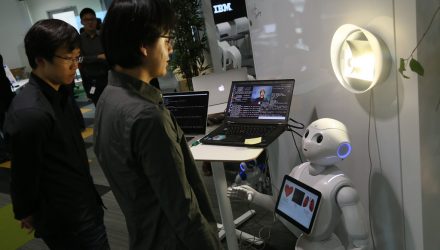This is precisely where Japan’s model can help. Japan is already far ahead of the US in its efforts to tackle the challenge of caring for a growing elderly population. That should come as no surprise, considering that Japan has the highest proportion of elderly citizens in the world. According to 2014 estimates, 33.0% of the Japanese population was above the age of 60, and people 65 and older made up a quarter of its total population. By 2050, over 38% of Japan’s population will be over the age of 65.
Those are big numbers, and the US is heading in the same direction. By 2050, 21% of the US population will be over the age of 65. Luckily for our own elderly population, Japan can teach us a thing or two about how to manage the eldercare workforce shortage that, for us, is just around the corner.
Related: Carnegie Mellon’s CREATE Lab Offers Look at Climate Change
Robots to the Rescue
Today, a fleet of 20 different models of robots helps provide care for elderly residents at Tokyo’s Shin-tomi nursing home. Paro, a robotic pet seal created at the National Institute of Advanced Industrial Science and Technology, provides companionship. Pepper, a humanoid robot by SoftBank, leads gentle workout classes designed just for seniors. Reif Co’s Tree crawls along the ground to offer rehab patients with physical support and guidance, and even coaxes them along with words of gentle encouragement. And Cyberdyne Inc’s HAL, a Hybrid Assistive Limb “suit” that the FDA approved for use in the US in March, gives caregivers the robotic muscles they need to lift and move patients from bed to chair to bath with ease.
The Japanese government hopes Shin-tomi will be a model for how the country can use the latest advancements in robotics to help manage the precarious combination of a shortage in healthcare workers and a rapid increase in its aging population. It’s a fascinating look into our own future.
These are early days for robotic-assisted care, but if it does indeed become the new standard for eldercare in Japan, the US, and elsewhere, it’s poised to be a catalyst for tremendous and rapid growth in the global market for robots that provide nursing care and disabled aid to patients. At the moment, Japanese manufacturers dominate the relatively small $19.2 million market for these specialized robots.[1] But to meet the eldercare needs of Japan alone, that number is expected to grow to about $3.8 billion by 2035. Considering the potential for global use, that number is likely to escalate exponentially.
Robots will never fully replace human caregivers, but Japan’s use of eldercare robots is certainly offering an important path toward more effective patient care, especially in the face of the US nursing shortage. That’s great news for patients of every age—and great news for investors who understand just how vital these robots will be for addressing growing healthcare needs around the globe.
For more on robotics and artificial intelligence, visit the Robotics & AI Channel.
